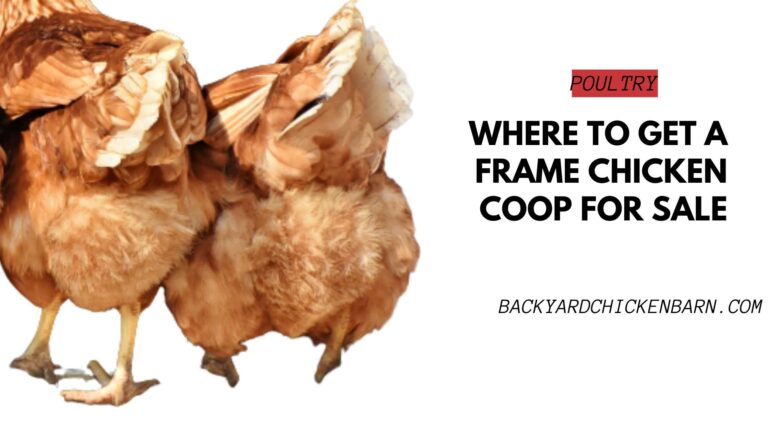Chicken Laws by County in North Dakota
Backyard chickens are booming across the U.S., and North Dakota is no exception. Whether you’re in Fargo, Bismarck, or a small rural town, the appeal of fresh eggs and sustainable living is strong. But before you buy your first chicks or hammer together a coop, you need to understand this important fact: chicken laws in North Dakota are set at the local level, not by the state.
This article breaks down chicken laws by county in North Dakota, helping you understand where and how you can legally keep chickens—whether you’re in an urban subdivision or out in the country.
Are Backyard Chickens Legal in North Dakota?
Direct answer: Yes, chickens are legal in most parts of North Dakota. However, each city or town within a county sets its own rules on how many chickens you can have, whether roosters are allowed, and how far coops must be from property lines.
Here’s what’s typically regulated:
-
Flock size limits (commonly 4–6 hens in urban areas)
-
Rooster restrictions (usually banned in cities)
-
Permit or registration requirements
-
Coop setback distances from property lines and residences
-
Cleanliness and nuisance control ordinances
Need help determining how much space your flock will need? Use the chicken coop calculator to design your coop to meet both legal and practical standards.
Chicken Laws by County in North Dakota
Let’s break down backyard chicken laws in major North Dakota counties. Note that rules vary by city or township, so always confirm with your local government.
Cass County
Direct answer: Backyard chickens are allowed in parts of Cass County, including Fargo, with specific limits and requirements.
Details:
-
Fargo allows up to 4 hens, with no roosters permitted.
-
A $30 annual permit is required.
-
Coops must be fully enclosed, predator-proof, and located at least 10 feet from property lines and 25 feet from dwellings.
-
West Fargo allows chickens in limited zoning areas with a permit and similar restrictions.
-
In unincorporated Cass County, chicken-keeping is common and loosely regulated.
Burleigh County
Direct answer: Chickens are legal in rural Burleigh County and in Bismarck under regulated conditions.
Details:
-
Bismarck permits up to 4 hens, with no roosters, and requires a $20 permit.
-
Coops must be placed 25 feet from any residence and regularly cleaned.
-
Chickens must be confined to the owner’s property.
-
Lincoln and other towns in the county have similar ordinances or follow Bismarck’s lead.
Grand Forks County
Direct answer: Chickens are allowed in both urban and rural areas, with specific city ordinances in place.
Details:
-
Grand Forks allows backyard hens under strict rules:
-
Up to 6 hens, no roosters
-
Coops must be located in the rear yard and 25 feet from neighboring homes
-
Permit required, along with neighbor notification
-
-
Rural parts of Grand Forks County are generally more relaxed about poultry keeping.
Ward County
Direct answer: Chickens are widely permitted in Ward County, including Minot, with local restrictions.
Details:
-
Minot allows up to 6 hens, and no roosters are allowed in residential areas.
-
A permit is required, and coops must meet sanitation and distance standards (typically 15–25 feet from homes).
-
In surrounding unincorporated areas, poultry is a common part of rural living and usually unregulated.
Williams County
Direct answer: Backyard chickens are allowed throughout the county, including in Williston, with reasonable limits.
Details:
-
Williston permits up to 6 hens with a required permit and setback rules.
-
Roosters are not allowed in city limits.
-
Coops must be placed at least 20 feet from neighboring homes and kept clean and pest-free.
-
Rural areas in Williams County are poultry-friendly with few restrictions.
Stark County
Direct answer: Backyard chickens are legal, and the City of Dickinson has specific ordinances to follow.
Details:
-
Dickinson allows residents to keep 4 hens with a permit.
-
Roosters are banned within city limits.
-
Coops must be secure, kept in rear yards, and at least 10 feet from property lines.
-
Outside Dickinson, chicken-keeping is common with little oversight.
Morton County
Direct answer: Chickens are permitted in both rural and urban zones, but cities like Mandan have specific rules.
Details:
-
Mandan allows up to 6 hens on residential lots, no roosters.
-
Coops must be well-maintained, enclosed, and located 20 feet from any residential structure.
-
Permits may be required, especially in denser zones.
Richland County
Direct answer: Backyard chickens are allowed across Richland County, with individual town policies.
Details:
-
Wahpeton permits chickens under regulated conditions:
-
4–6 hens, no roosters
-
Coop setback of 15–25 feet
-
Must meet sanitation requirements
-
-
In unincorporated areas, chickens are generally allowed without limits.
What Most North Dakota Chicken Laws Have in Common
Although local ordinances differ, here are the common trends seen across North Dakota municipalities:
| Rule | Typical Standard |
|---|---|
| Number of hens allowed | 4–6 in cities; more in rural zones |
| Roosters | Prohibited in residential neighborhoods |
| Coop setback requirement | 10–25 feet from homes or property lines |
| Permit required | Yes, in most cities ($20–$30/year) |
| Coop standards | Must be enclosed, clean, and predator-proof |
| HOA/community rules | May override city or county permissions |
Tips for Keeping Chickens Legally in North Dakota
Follow these tips to keep your backyard flock compliant and neighbor-friendly:
-
Contact your city or township first to confirm the current rules.
-
Avoid roosters unless you’re in a rural/agricultural zone.
-
Respect setbacks—don’t place your coop too close to another home or property line.
-
Keep the coop clean to prevent pests and odors.
-
Use the chicken coop calculator to plan a legal, functional coop layout.
Conclusion: Raising Chickens in North Dakota Is Easy—If You Know the Local Laws
From Fargo to Dickinson and everywhere in between, backyard chicken keeping is alive and well in North Dakota. Most towns support small flocks of hens—so long as you’re respectful of your neighbors and meet local health, space, and zoning standards.
Before you build a coop or bring home a box of peeping chicks, check your local ordinance and plan accordingly.
Need help designing your coop to meet North Dakota’s typical zoning rules? Use the chicken coop calculator to figure out how much space you need based on your flock size and local laws.
Fresh eggs, feathered friends, and a self-sufficient lifestyle are all within reach—just make sure you start with the right rules.


